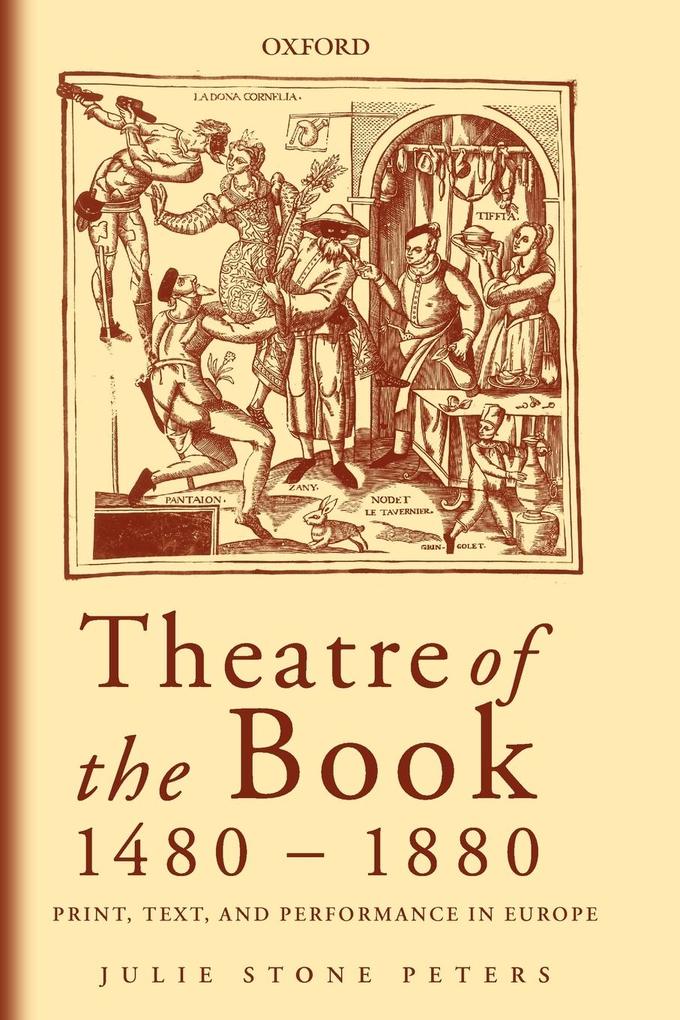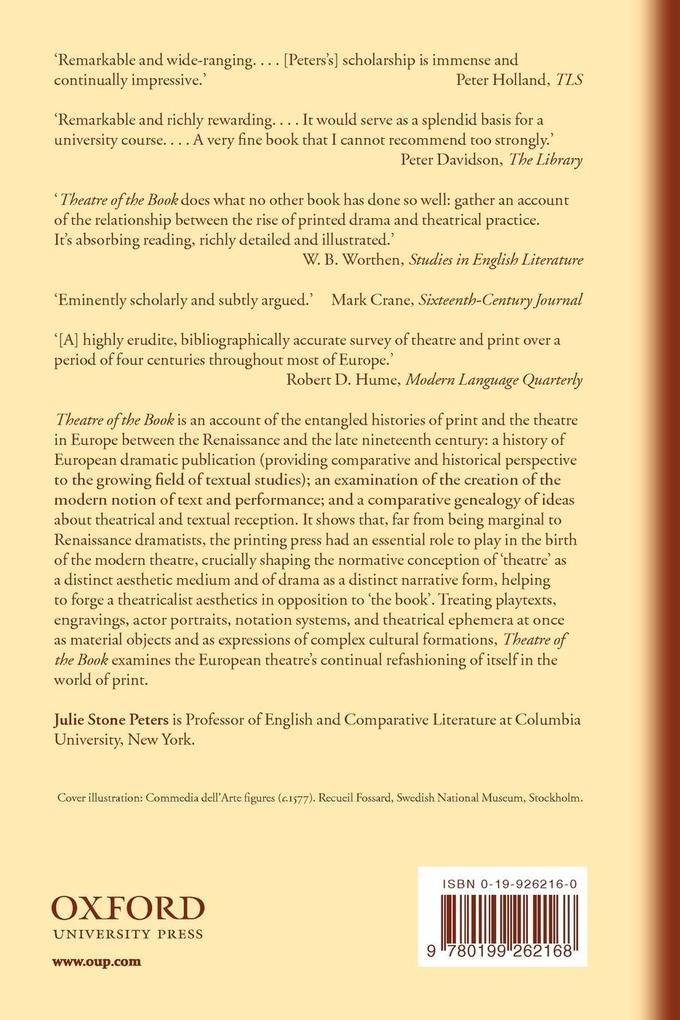Theatre of the Book explores the impact of printing on the European theater, 1480-1880. Far from being marginal to Renaissance dramatists, the printing press played an essential role in the birth of the modern theater. Looking at playtexts, engravings, actor portraits, notation systems, and theatrical ephemera as part of the broader history of theatrical ideas, this illustrated book offers both a history of European dramatic publication and an examination of the European theater's continual refashioning of itself in the world of print.
Inhaltsverzeichnis
- Introduction
- I. Printing the drama
- 1: Experimenting on the page, 1480-1630
- 2: Drama as institution, 1630-1760
- 3: Illustrations, promptbooks, stage texts, 1760-1880
- II. Theatre imprimatur
- 4: Reinventing 'theatre' via the printing press
- 5: Critical law, theatrical licence
- 6: Accurate texts, authoritative editions
- III. The senses of media
- 7: The sense of the senses: sounds, gesture and the body on stage
- 8: Narrative form and theatrical illusions
- 9: Framing space: time, perspective, and motion in the image
- IV. The commerce of letters
- 10: Dramatists, poets, and other scribblers
- 11: Who owns the play? Pirate, plagiarist, imitator, thief
- 12: Making it public
- V. Theatrical impressions
- 13: Scenic pictures
- 14: Actor/author
- 15: A theatre too much with us
- Epilogue
- Notes
- Works Cited
- Index











